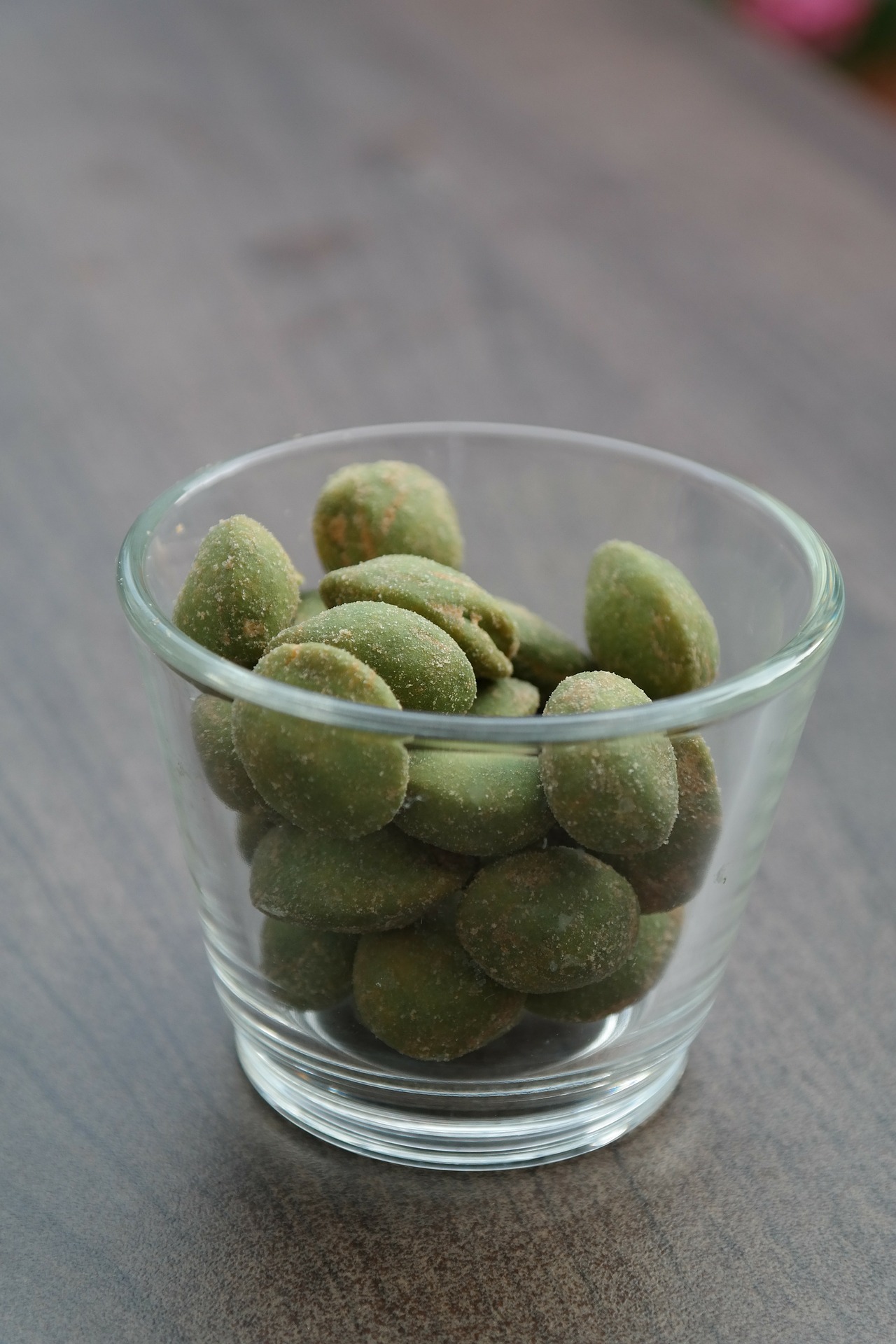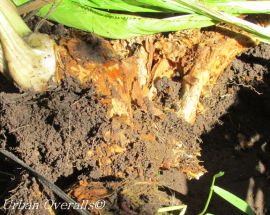I love this time of year. The air is cool, the earth is damp, and there are still a few edibles in the garden. Early fall means that it is time to harvest one of my favorite vegetables. Yes, it is horseradish season!
Horseradish (Amoracia rusticana) is a perennial that is in the Brassicaceae family. This is the same family that includes cabbage, kohlrabi, brussels sprouts, and mustard. Since it is a perennial, you do not have to replant it every year like cabbage. Simply leave a few horseradish roots in the ground after each harvest and you will be blessed with horseradish for years to come. Please note that this plant is hardy in USDA zones 3 – 9.
This particular vegetable is grown specifically for its very pungent root. As the season progresses, it develops more flavor. My mom who raised horseradish and whose parents raised horseradish always said, “You only harvest horseradish in a month that has an ‘r’ in it”. For her, that meant waiting until early fall with October and November being the primary months of harvest.
To test this out, I harvested some roots in May from a crop that I planted two years prior. After washing and peeling the root, there was a faint aroma, but not the harsh note that I was expecting. I grated the root and added it to some sour cream (a favorite way of enjoying it). I tried it on a baked potato and the flavor was so mild, the horseradish was barely detectable. To continue with testing, I harvested in the summer and resulting condiment had a more pronounced flavor.
But if you truly love the full depth of what horseradish can be, wait until it is no longer actively growing (which means fall) and you have already had a frost. This year, October was my harvest month.
If you are worried about harvesting before a frost, don’t. Horseradish can survive temperatures to -20F. But with a fall harvest, your main concern should be harvesting before the ground freezes. If you wait too long and the ground does freeze, you can simply wait to harvest the following year in early spring before the plant begins to actively grow (think February through April).
To harvest horseradish, make sure the soil is slightly damp (not wet) around the roots. It will make harvesting easier compared to digging in a dry, hard packed soil. Use a digging fork (just like what you would use to harvest potatoes) and start digging about 12″ away from the plant. At this point you are loosening the soil and trying to determine which way the primary roots have grown. For the record, it is not always straight down. Continue to loosen the soil with the digging fork until you are able to get the fork under a large root. Gently lift the fork, trying to prevent the root from breaking in half. This is not always avoidable, but try to get as much of the root as possible.
After collecting the roots, wash them off. The easiest method I have found is to rinse them off with a garden hose. Once the roots are clean, pat them dry with a cloth.
Now you can either store them for later use or peel them to use now. If you choose to store them, place damp (not wet) sand in a large, plastic container with a lid. Bury the roots individually with a layer of sand between them. After that, cover the container with the lid and store in a cool location like a crawl space or basement. Horseradish stored this way will last for several months.
You can also store unpeeled horseradish by wrapping them in paper towels and them placing them in a perforated plastic bag (like the ones grapes come in at the grocery store or you can simply poke holes in a regular plastic bag). Once in the bag, you can store them in the vegetable bin of the refrigerator for at least a month according to Oregon State University.
Harvesting horseradish is quite simple. Treat it like a potato using a digging fork and be sure to harvest late in the season, waiting until you have at least had a first frost. Clean and store the horseradish and you will be able to enjoy it for months to come!
To find locally grown horseradish, in season, visit Pick-A-Pepper.com!
About the author: Connie Meyer grew up on a farm in rural Iowa which taught her many lessons:raising chickens, growing produce, enjoying raw milk, how to cook from scratch using whole foods, canning, mending clothes, and the importance of being someone who gives back to the community. Now living in an urban setting, she brings her country ways to the city. Join Mr. and Mrs. Overalls as they share their adventures, recipes, and how-tos from their 1/3 acre slice of heaven near the center of town. See more great stuff on their blog: http://urbanoveralls.net
Similar Stories:
- 15 Vegetable Crops To Start Planting for Fall
- 20 Perennial Crops to Plant Now and Enjoy For A Lifetime.
- Growing Figs In a Temperate Climate
- Growing Peas
- Harvesting, Curing, & Storing Potatoes






